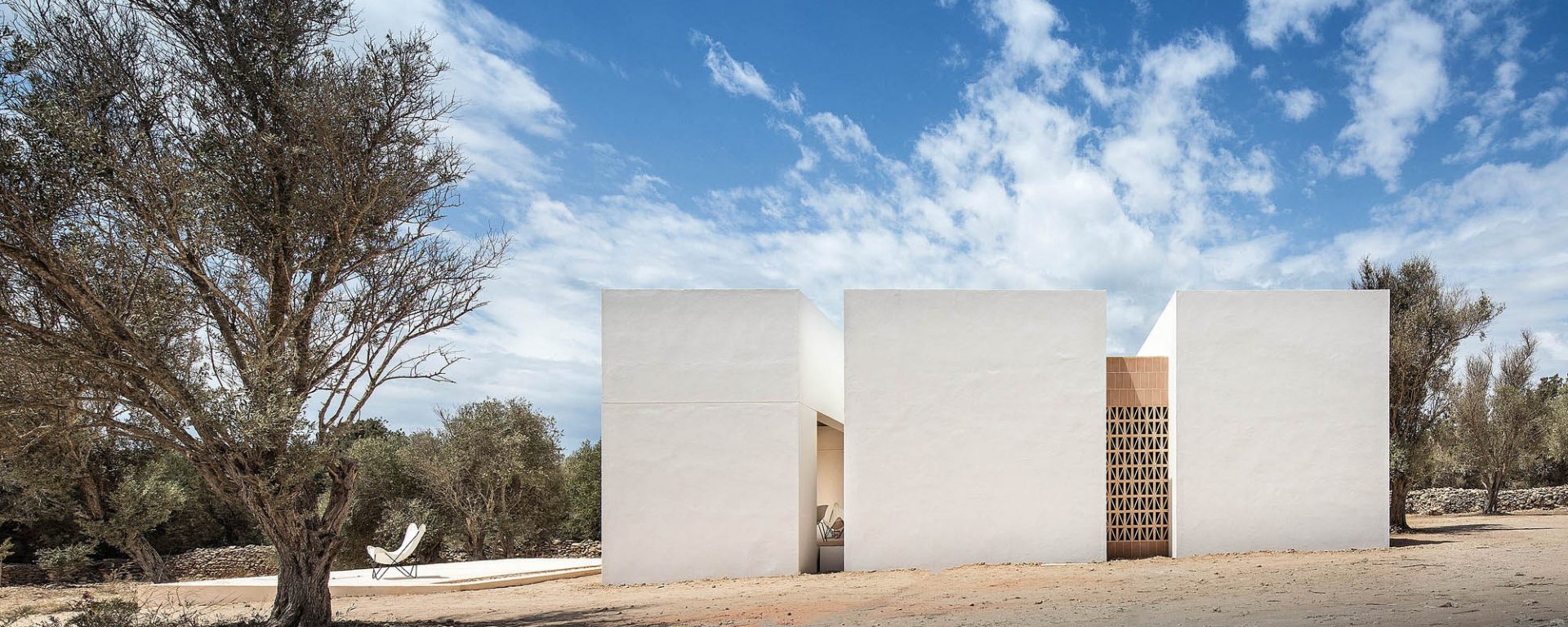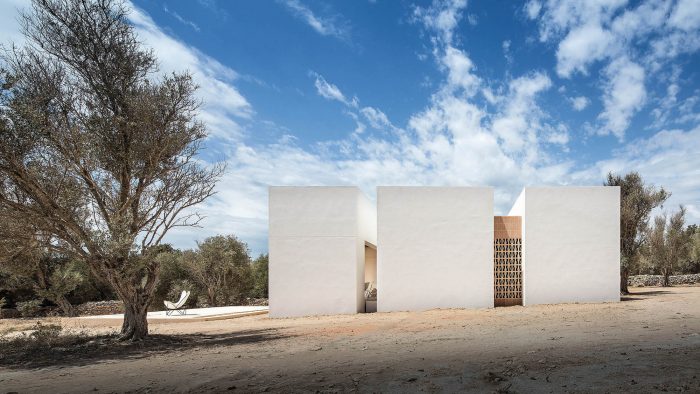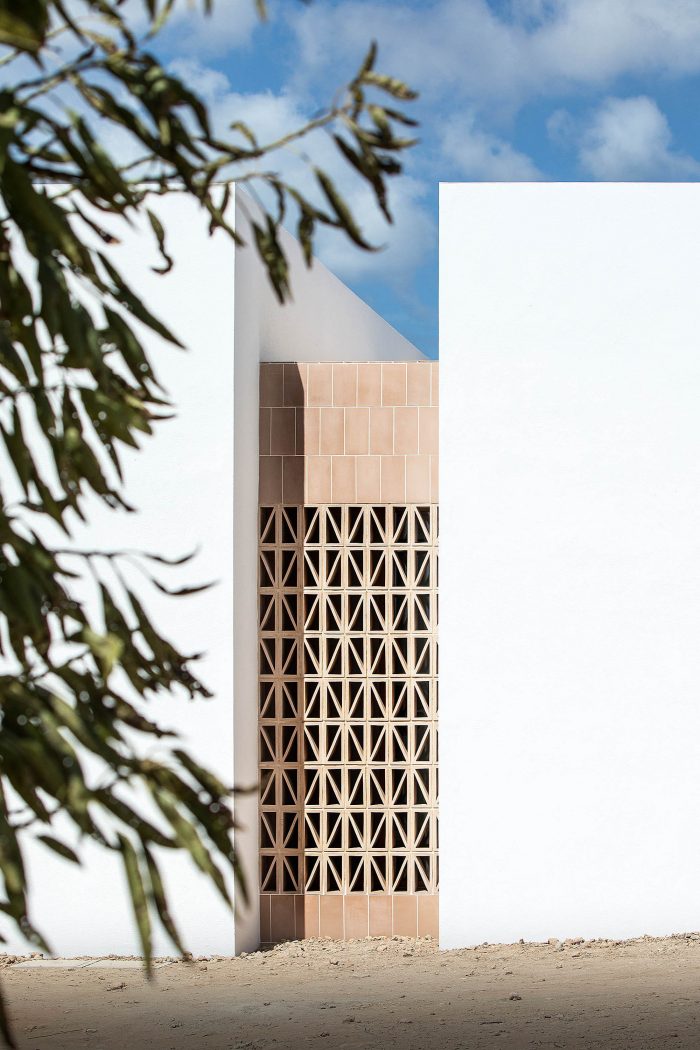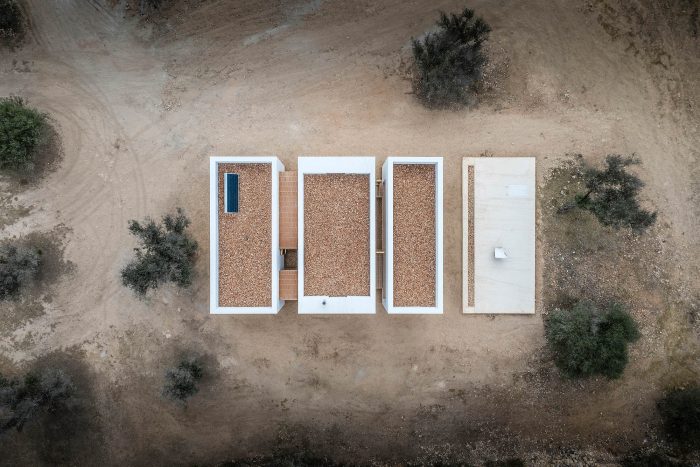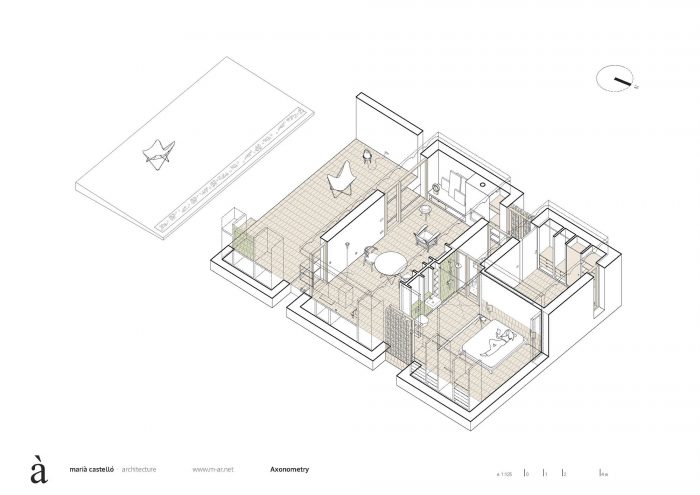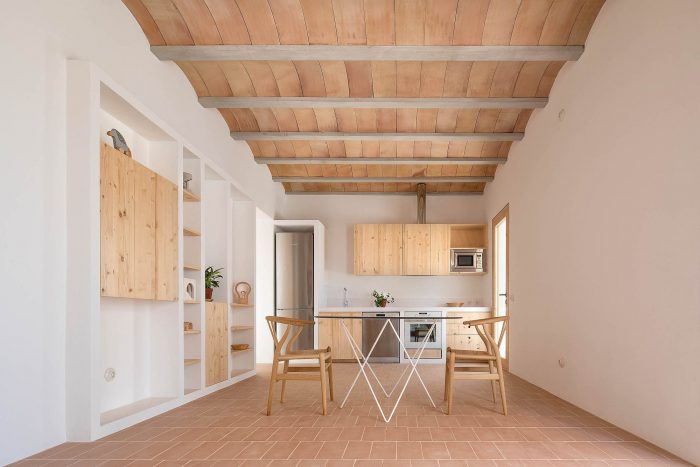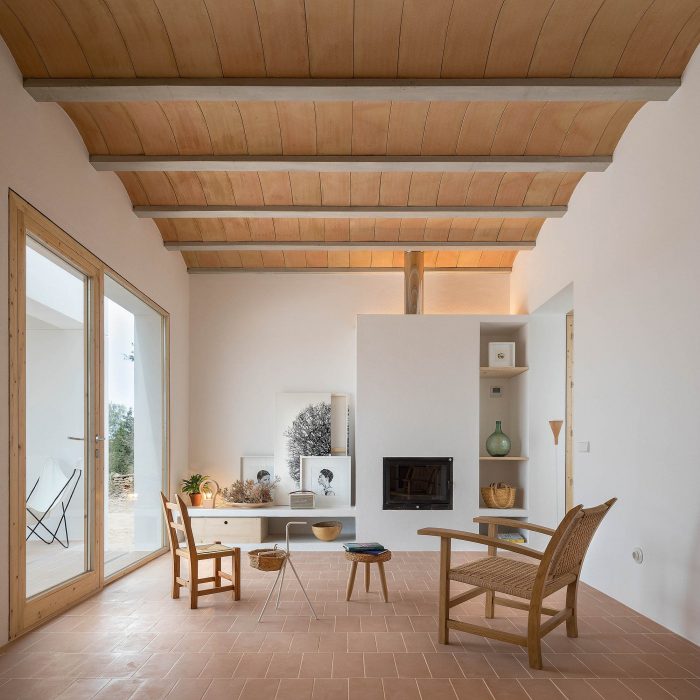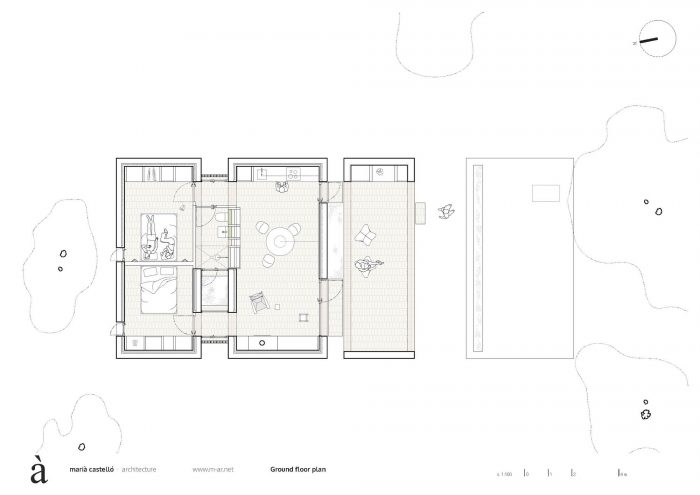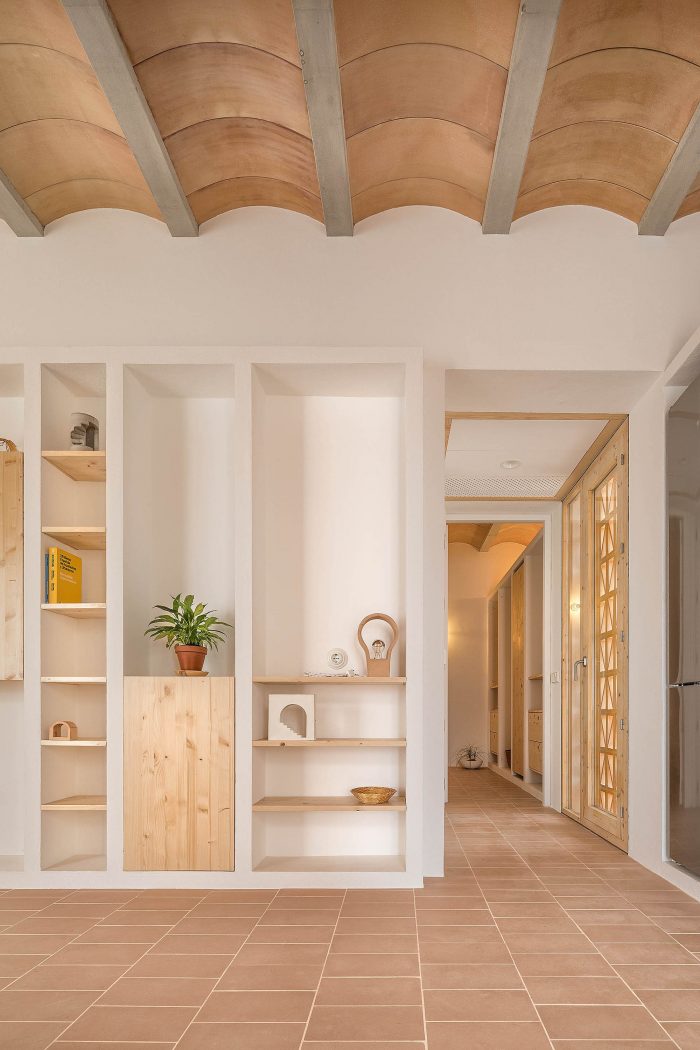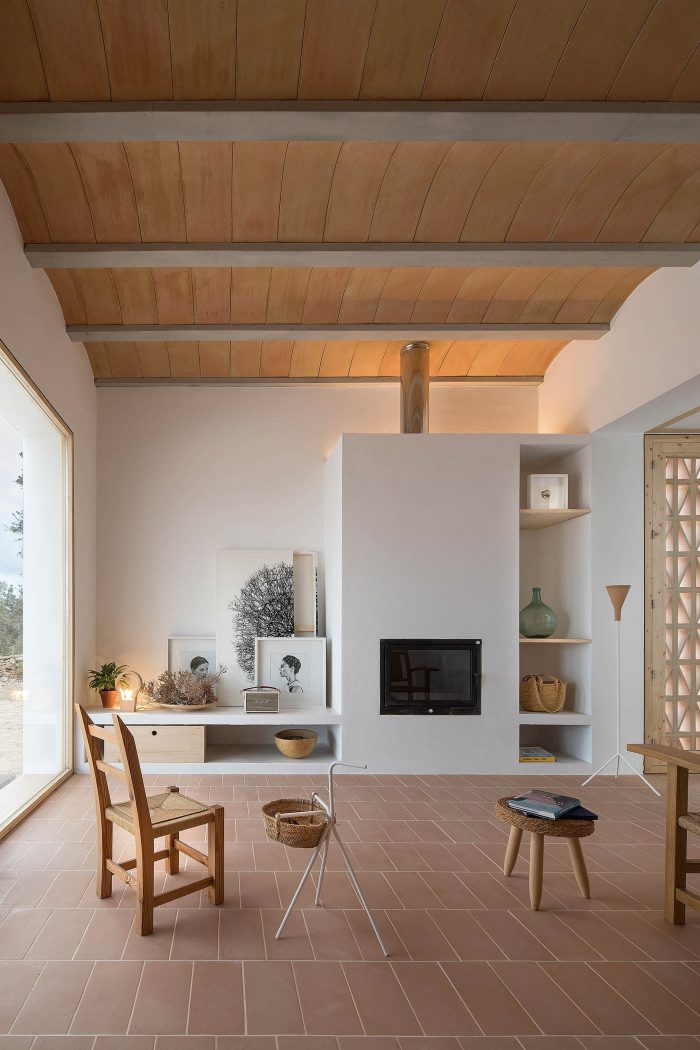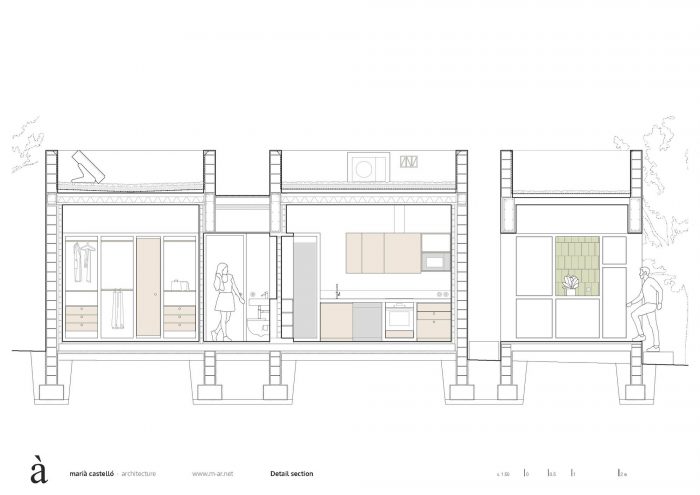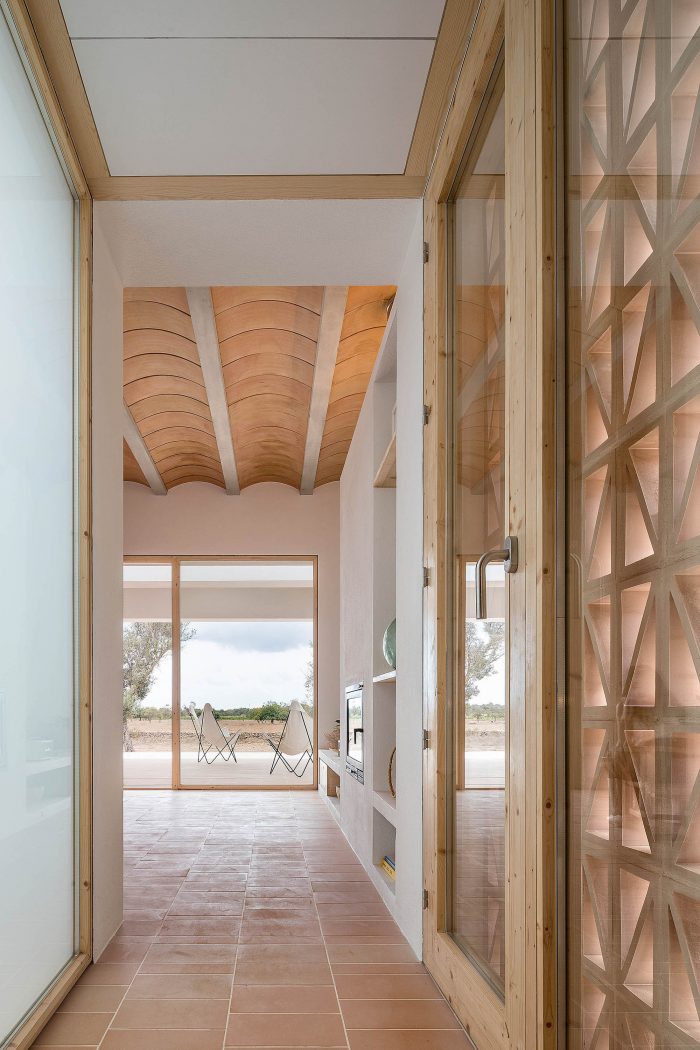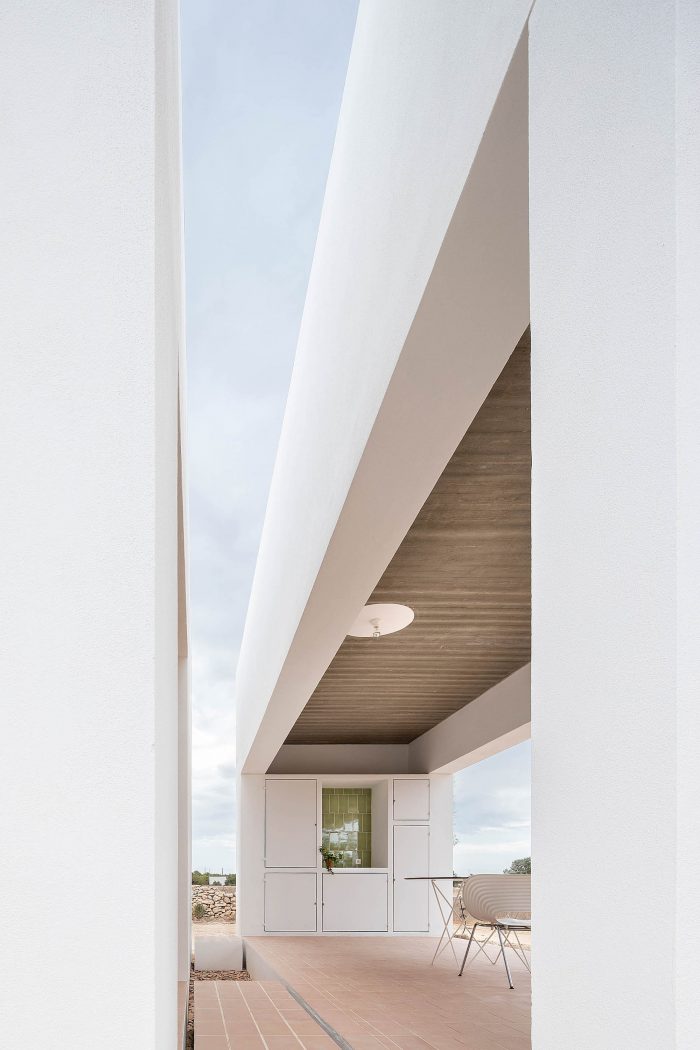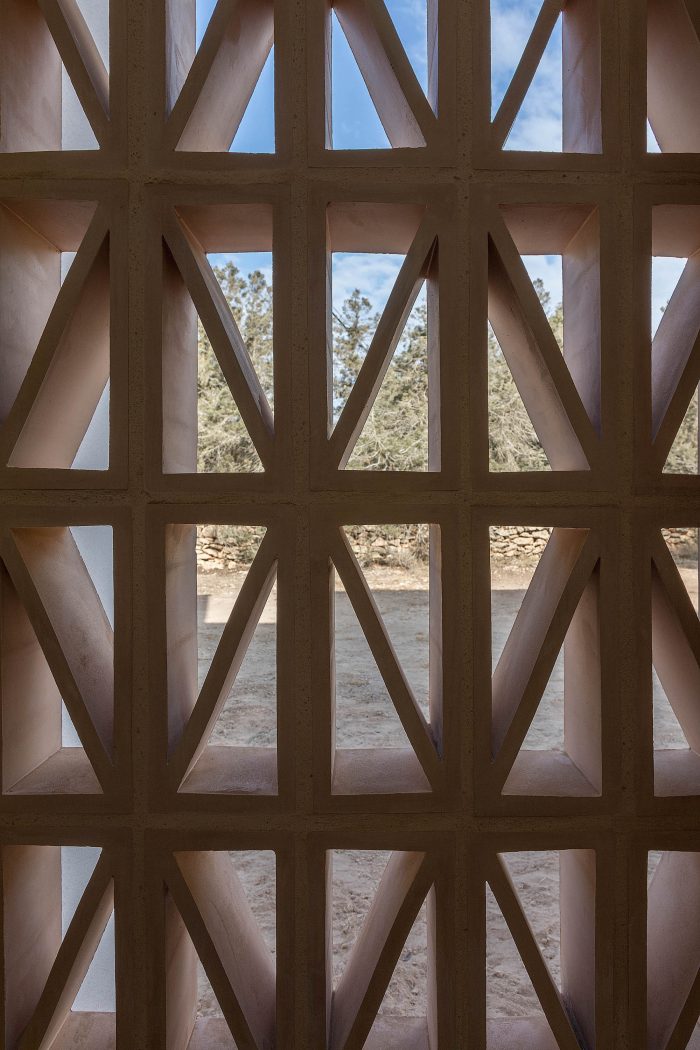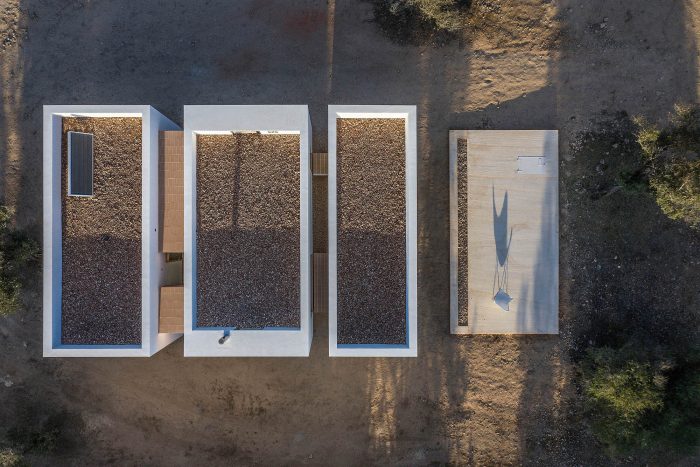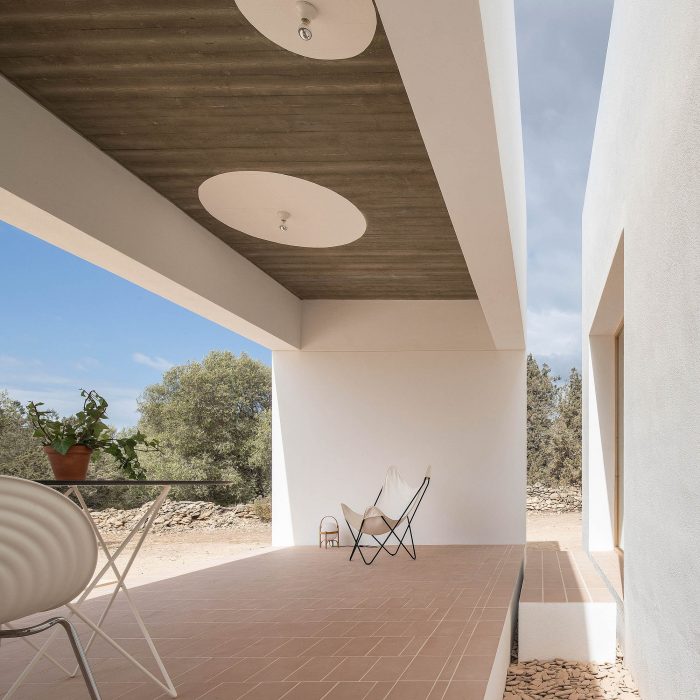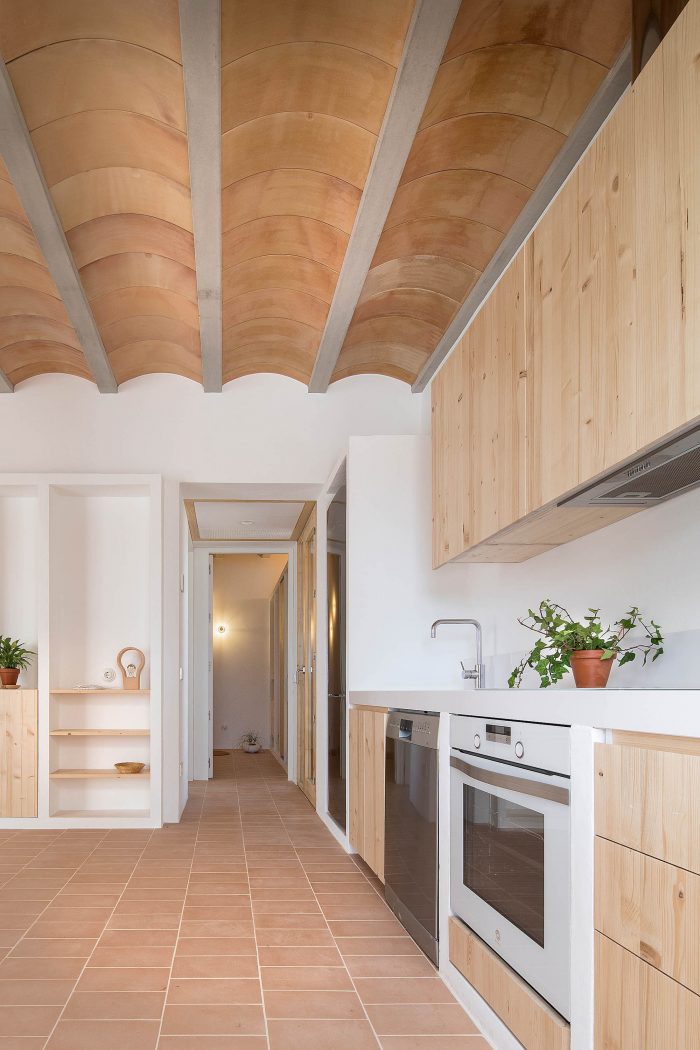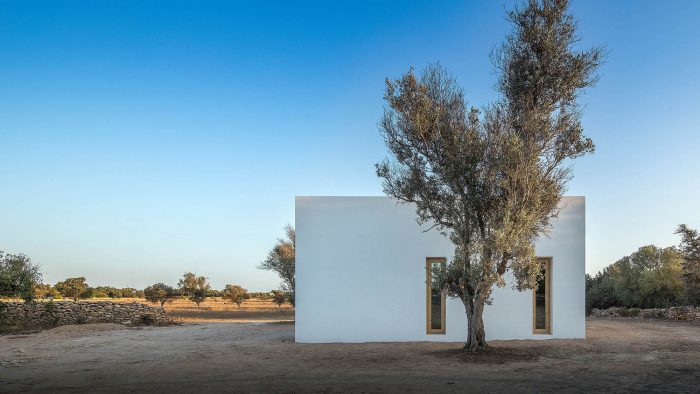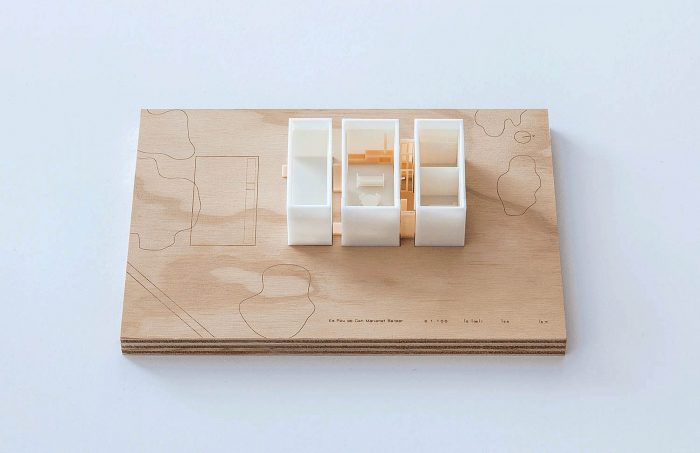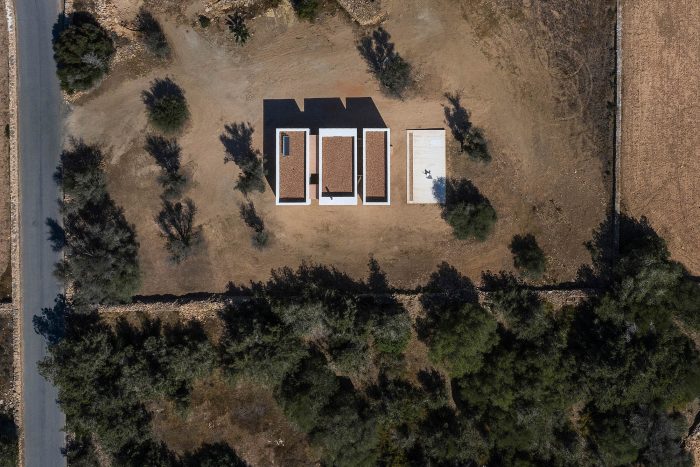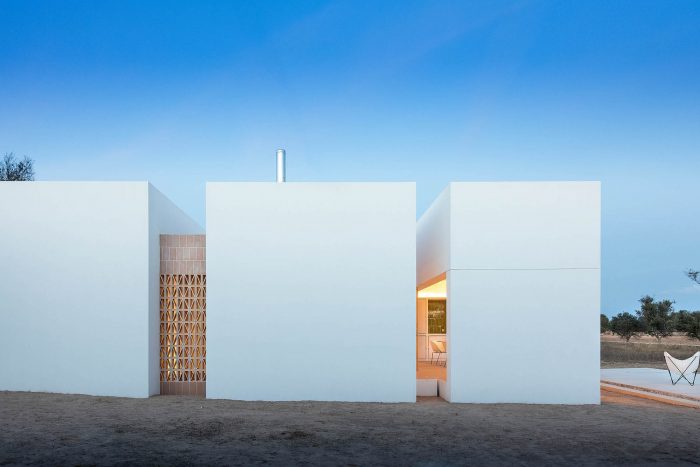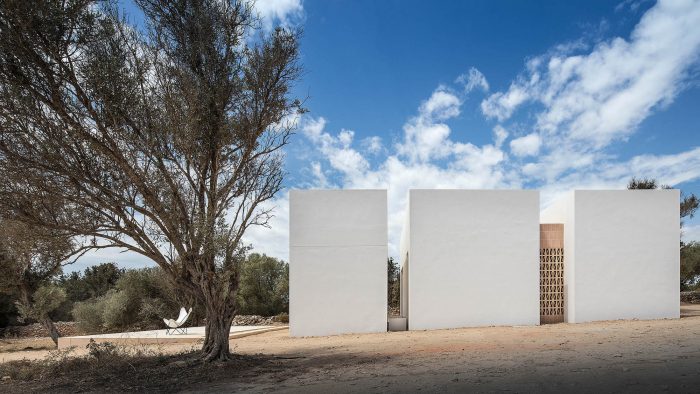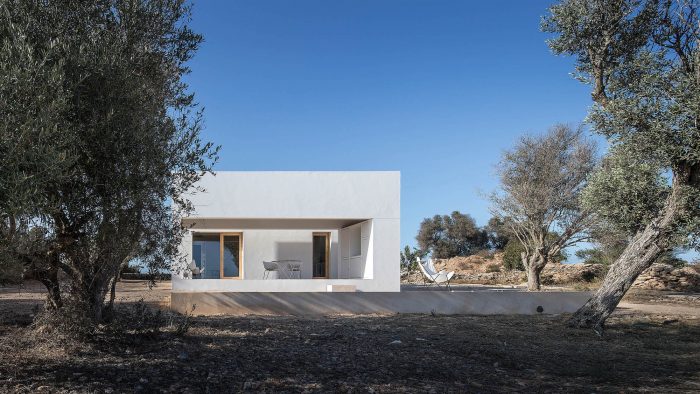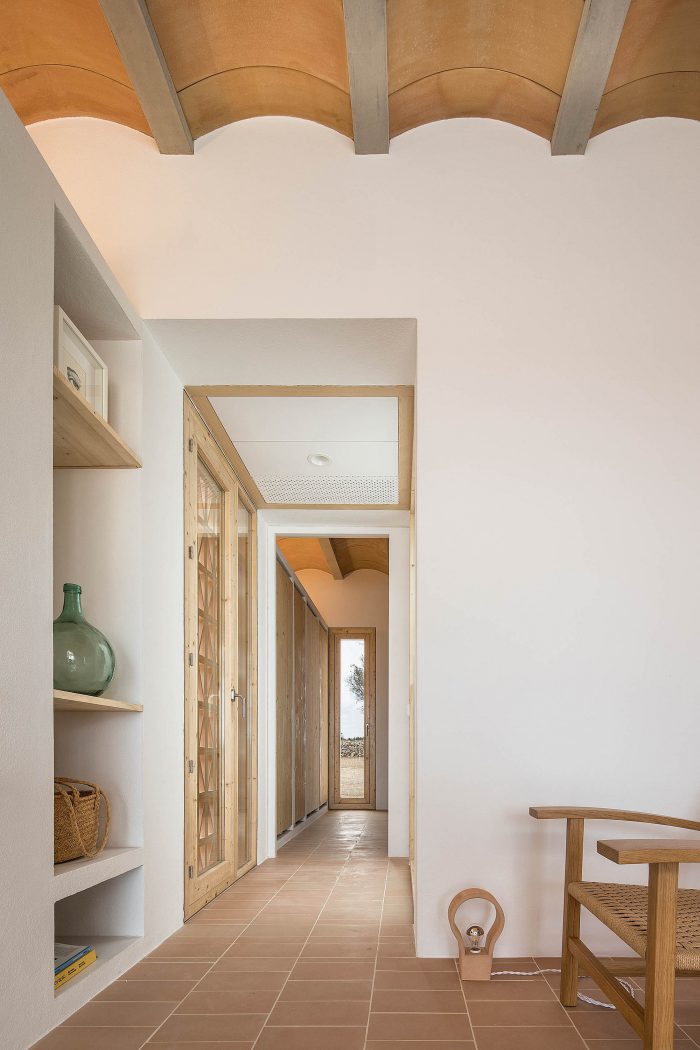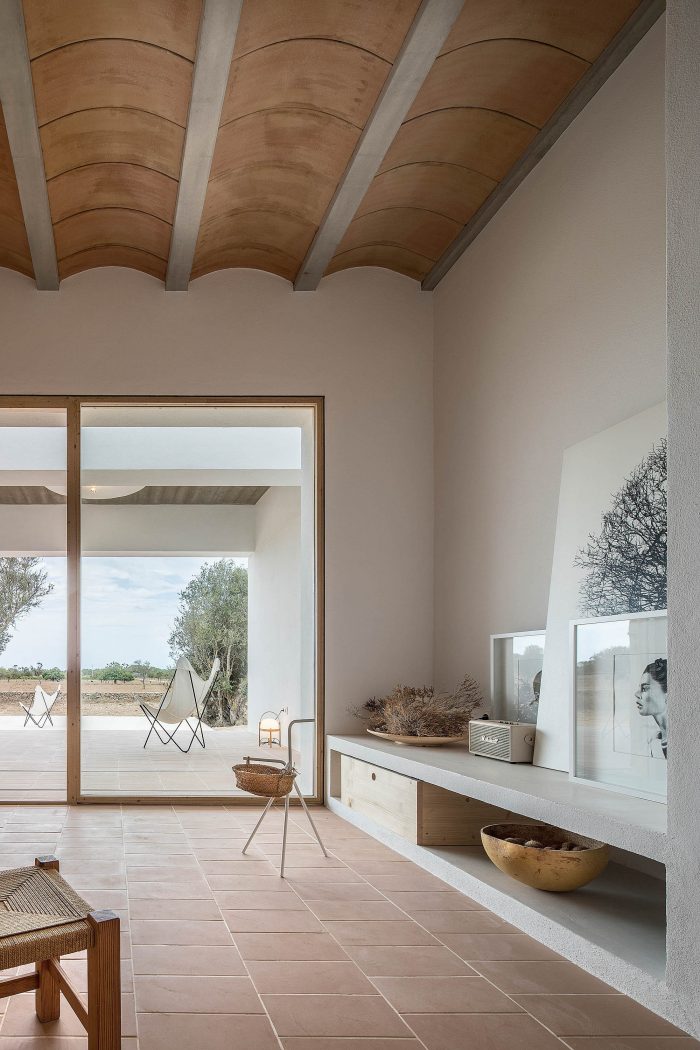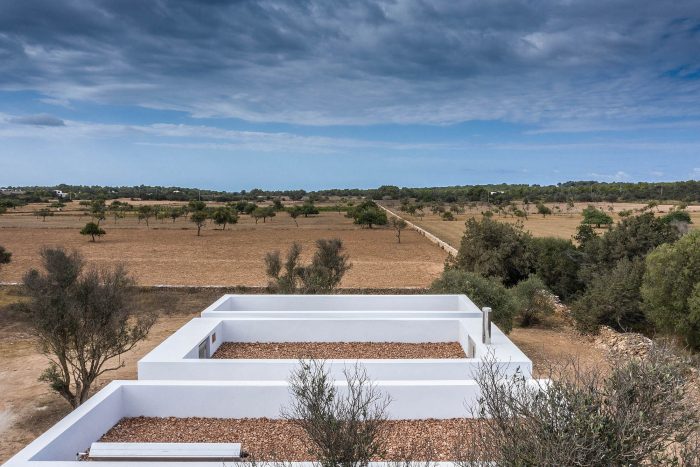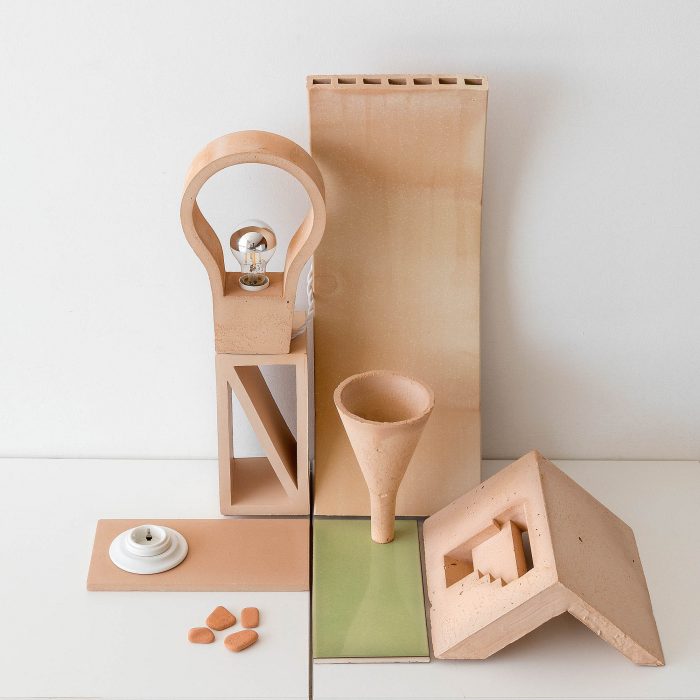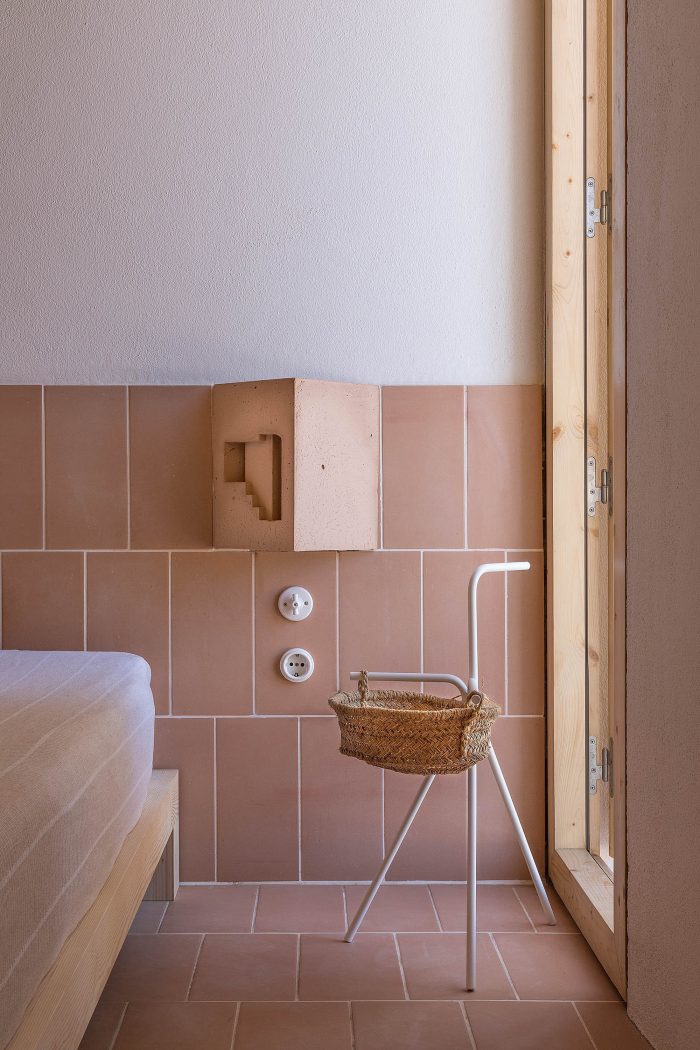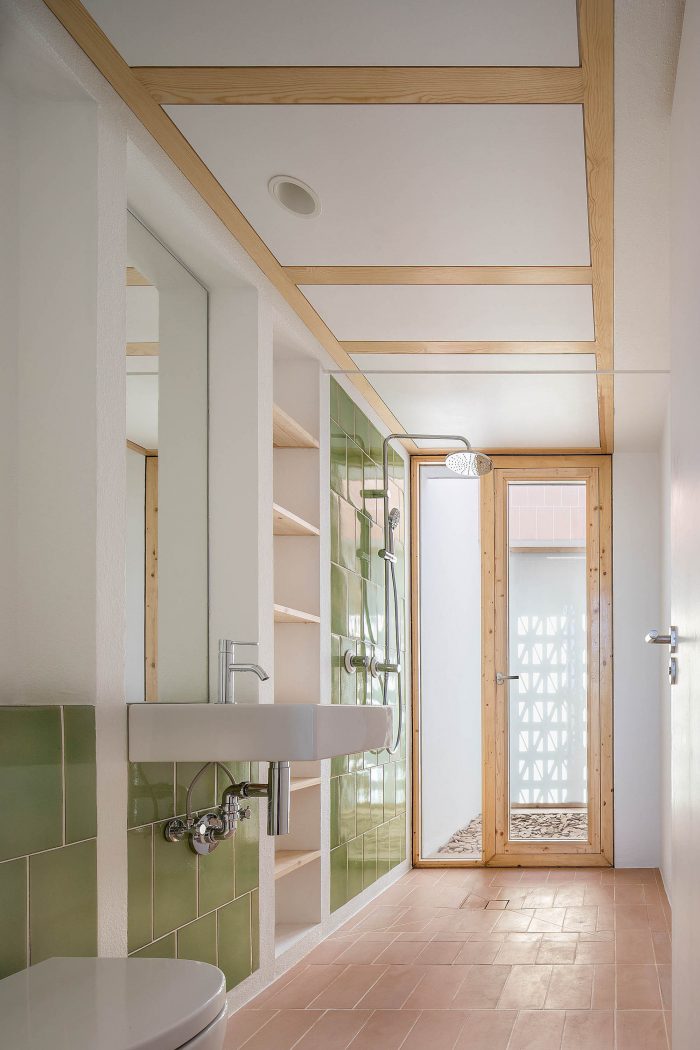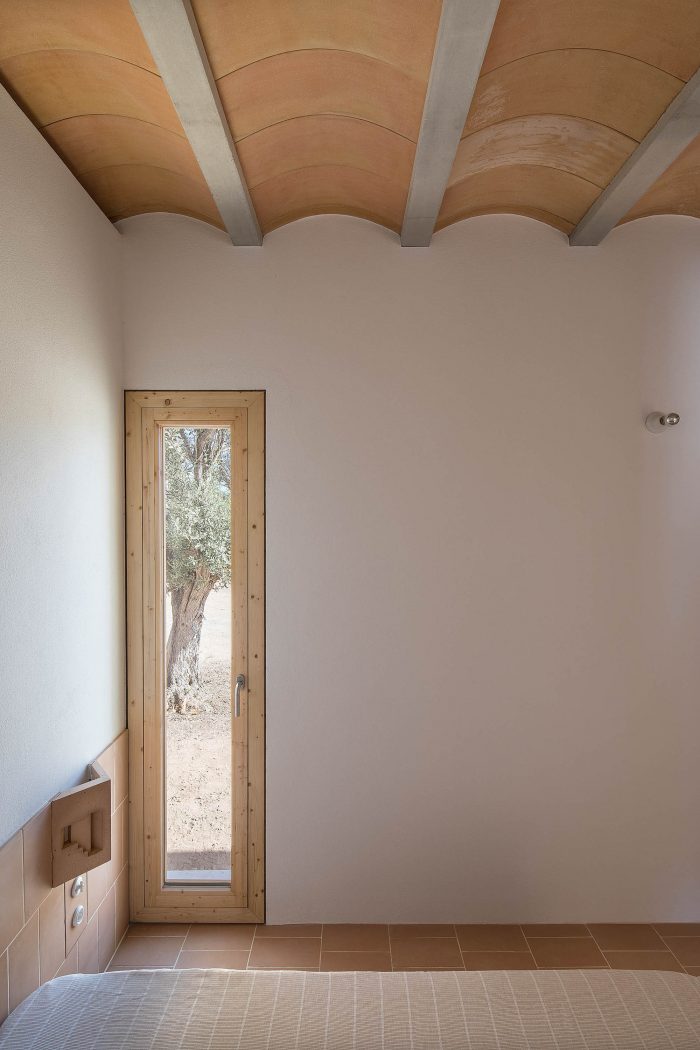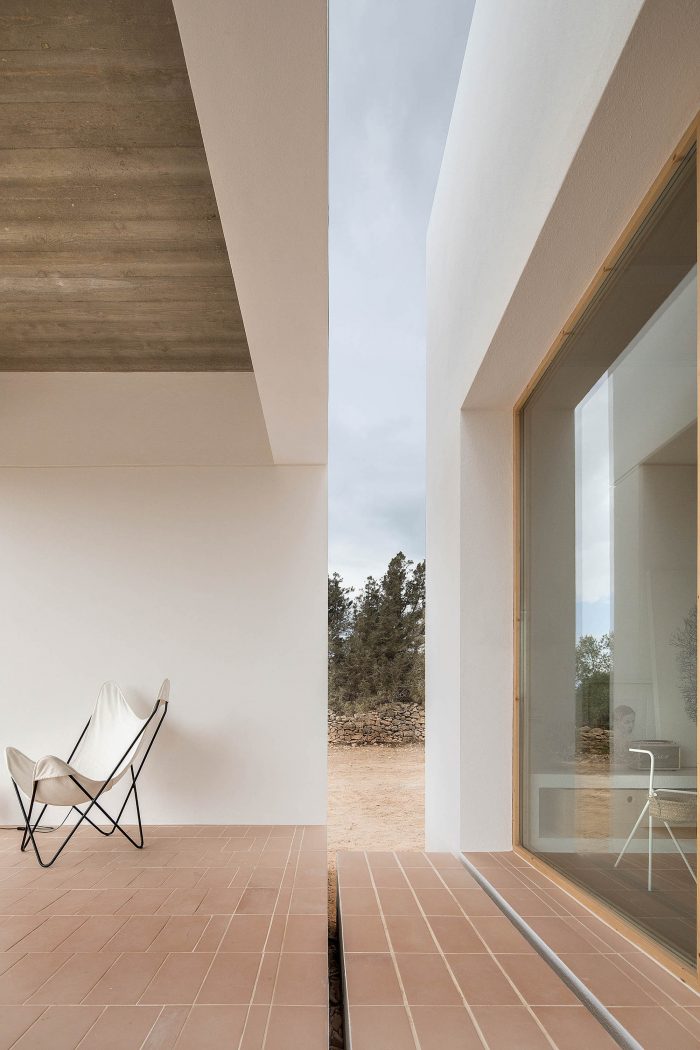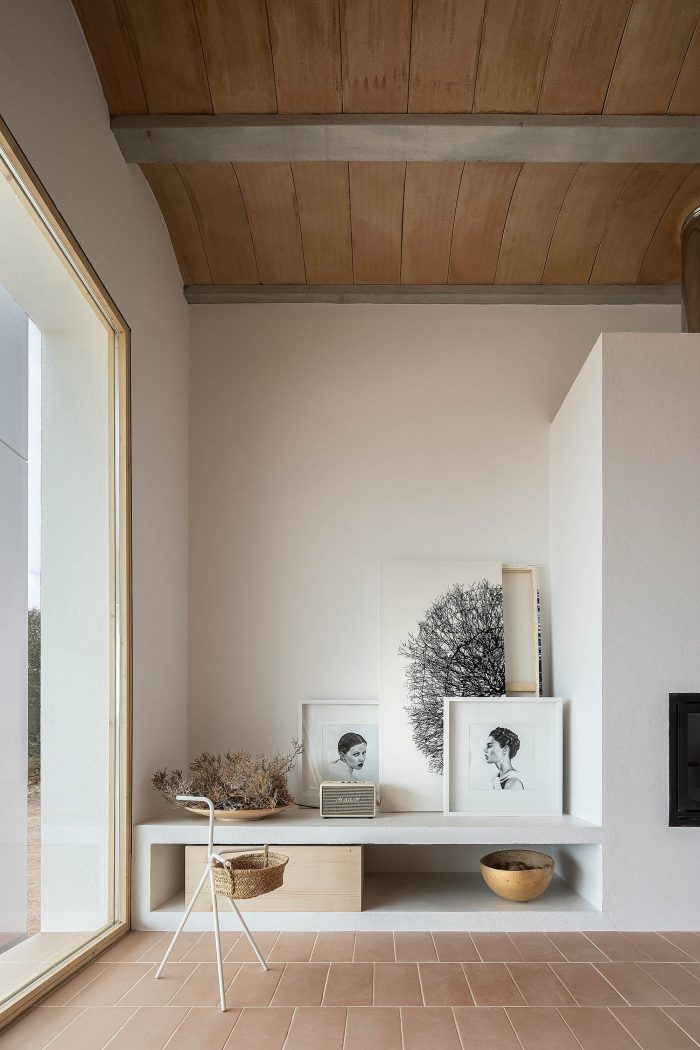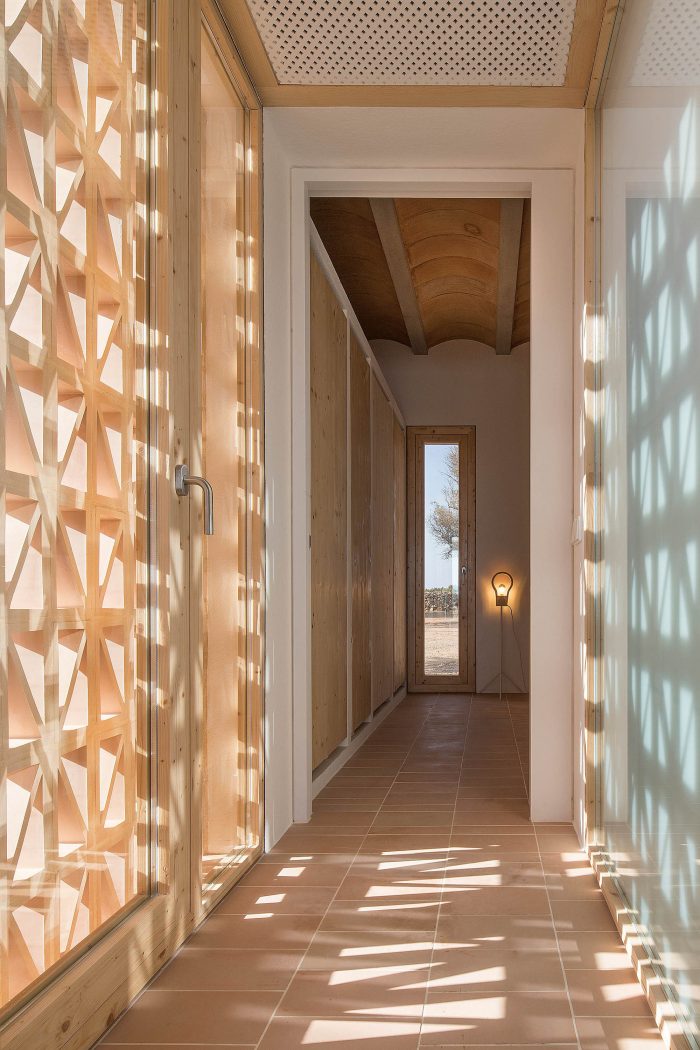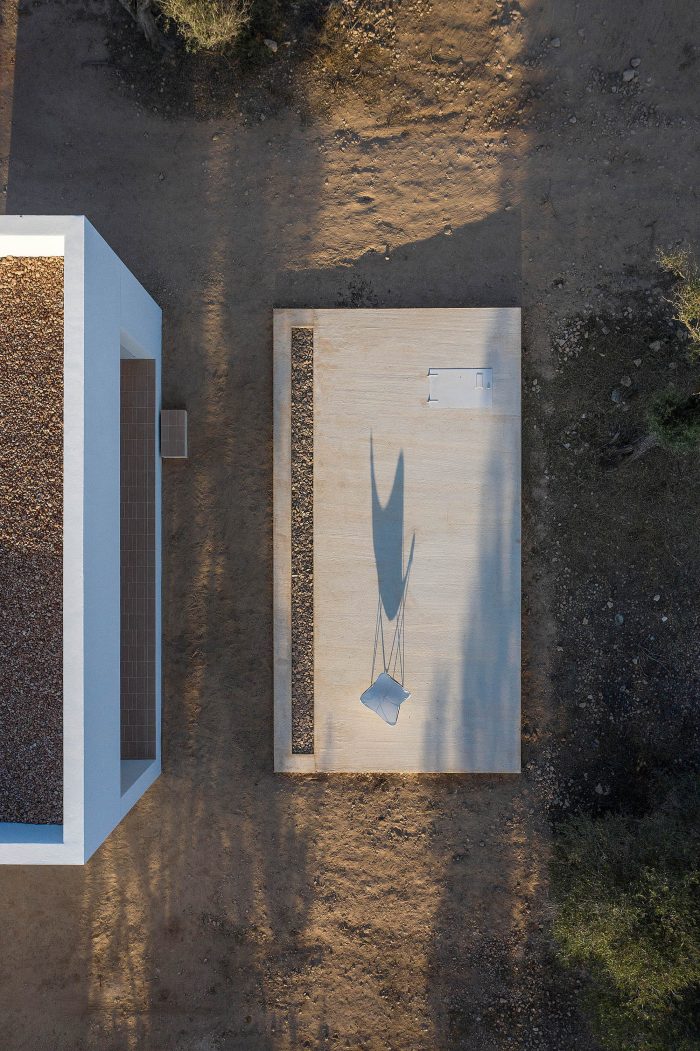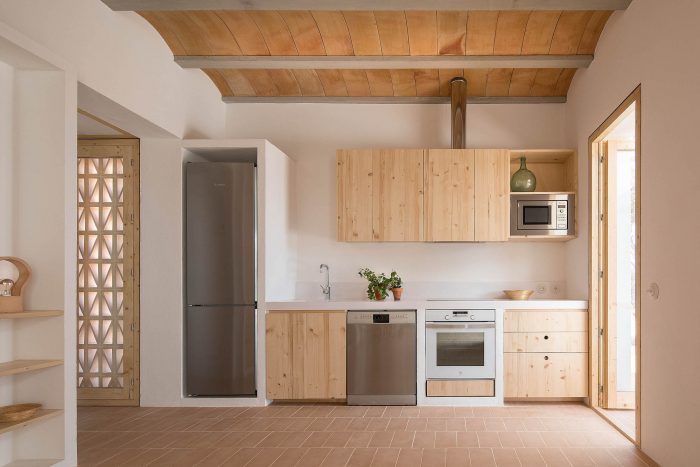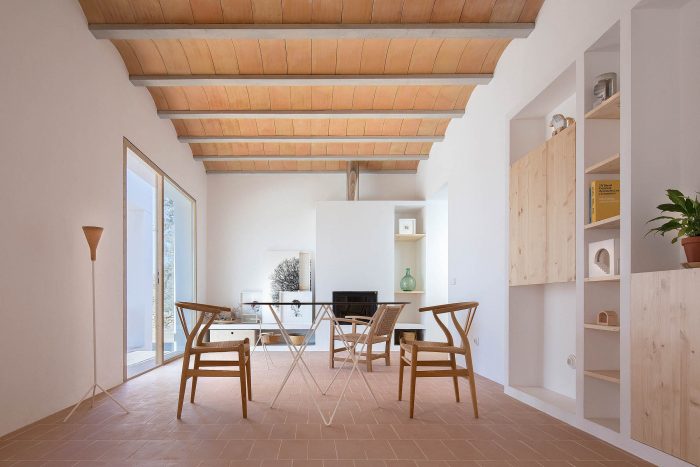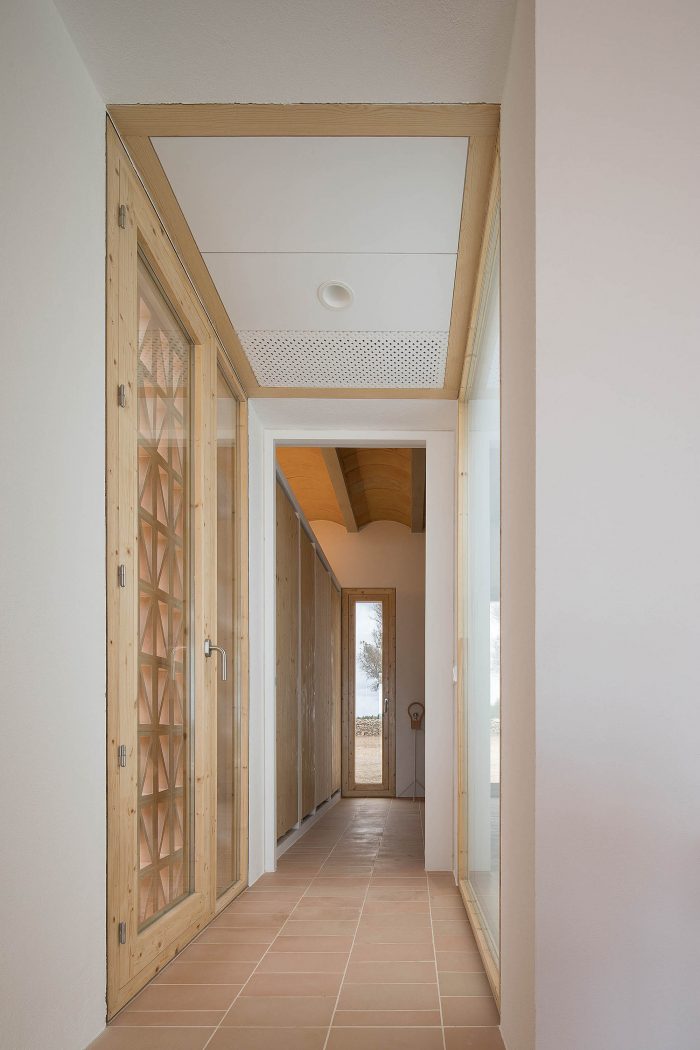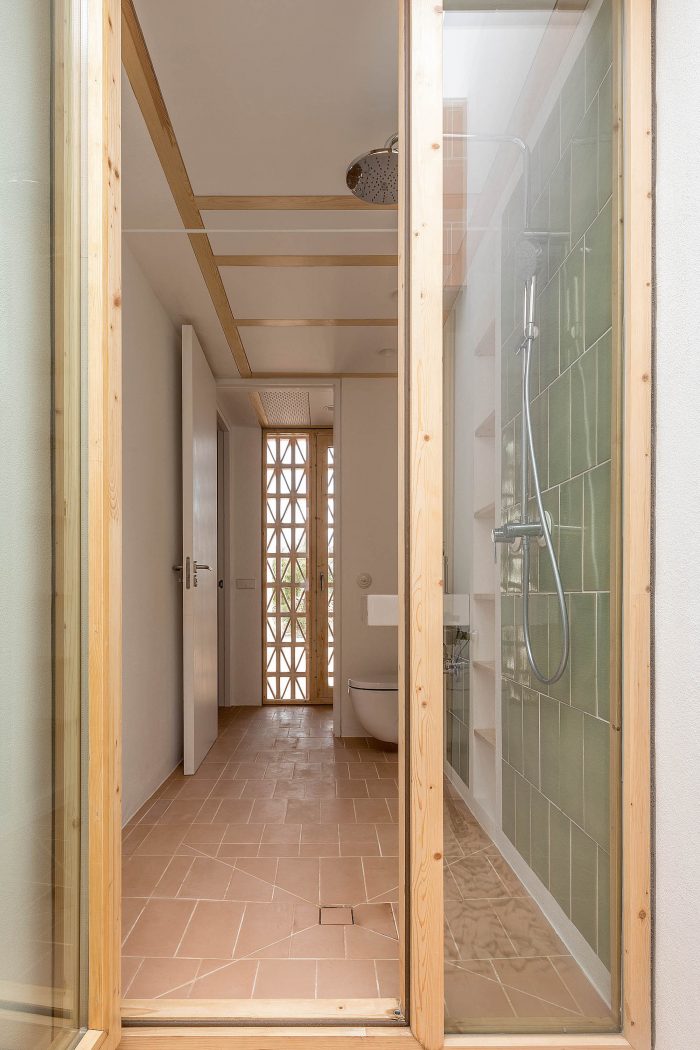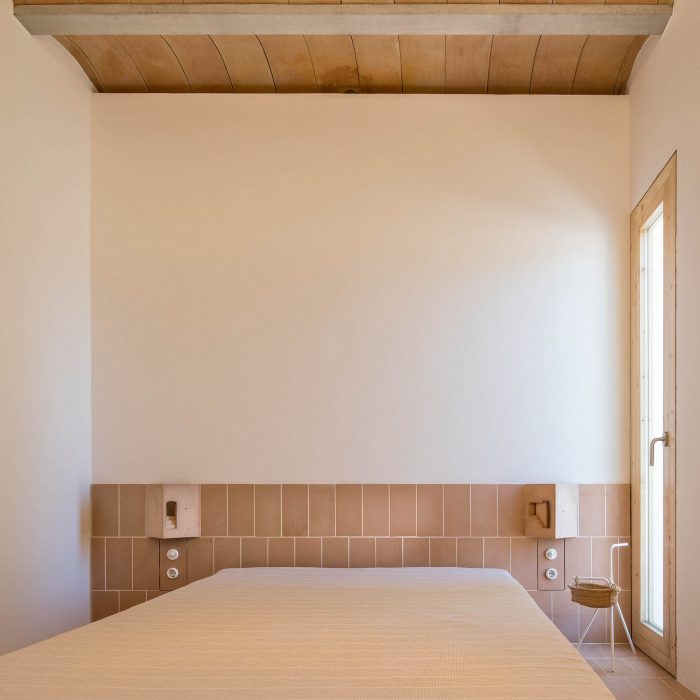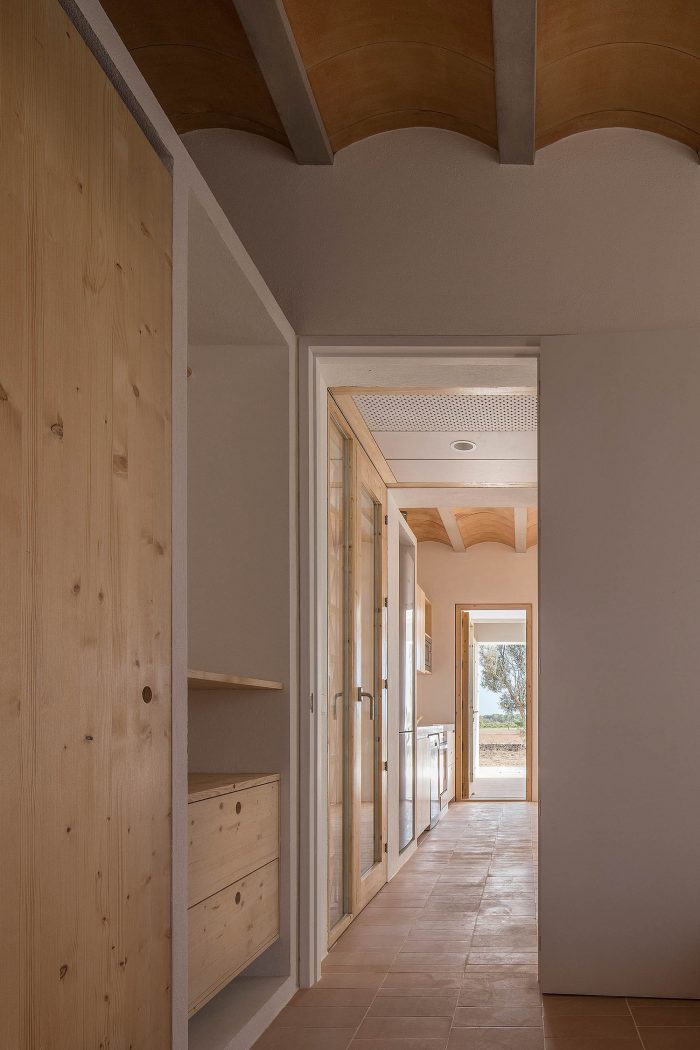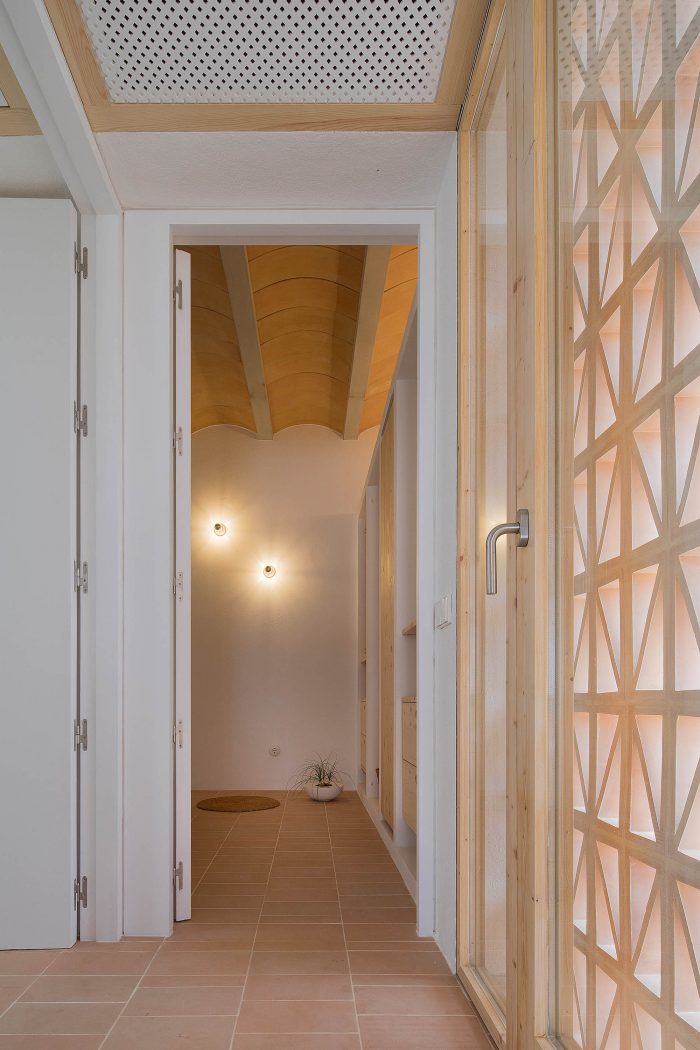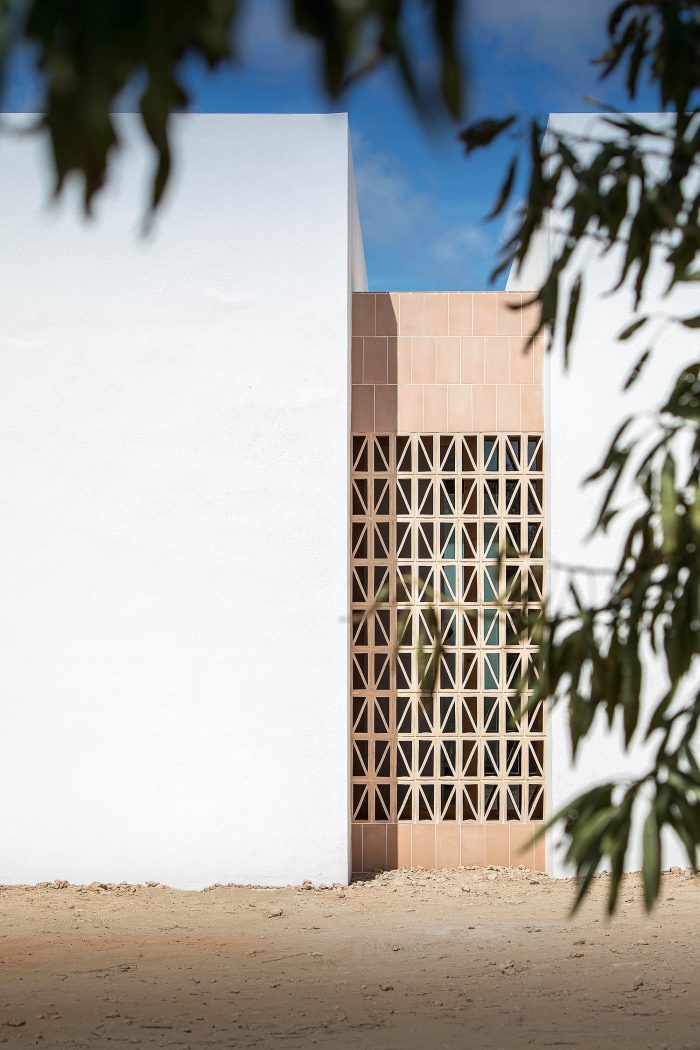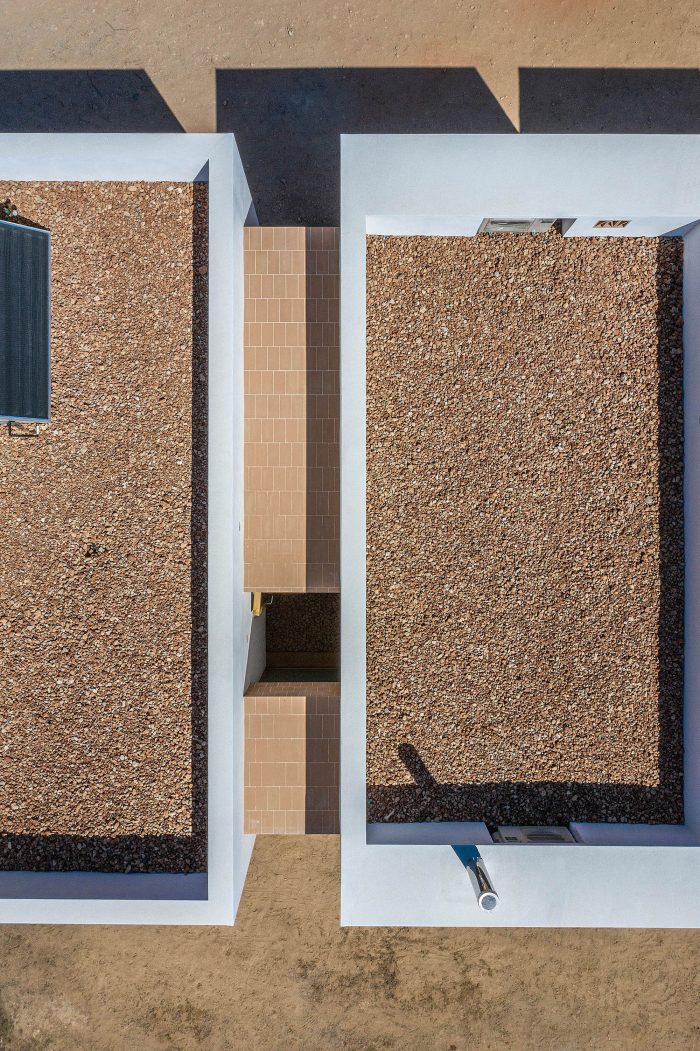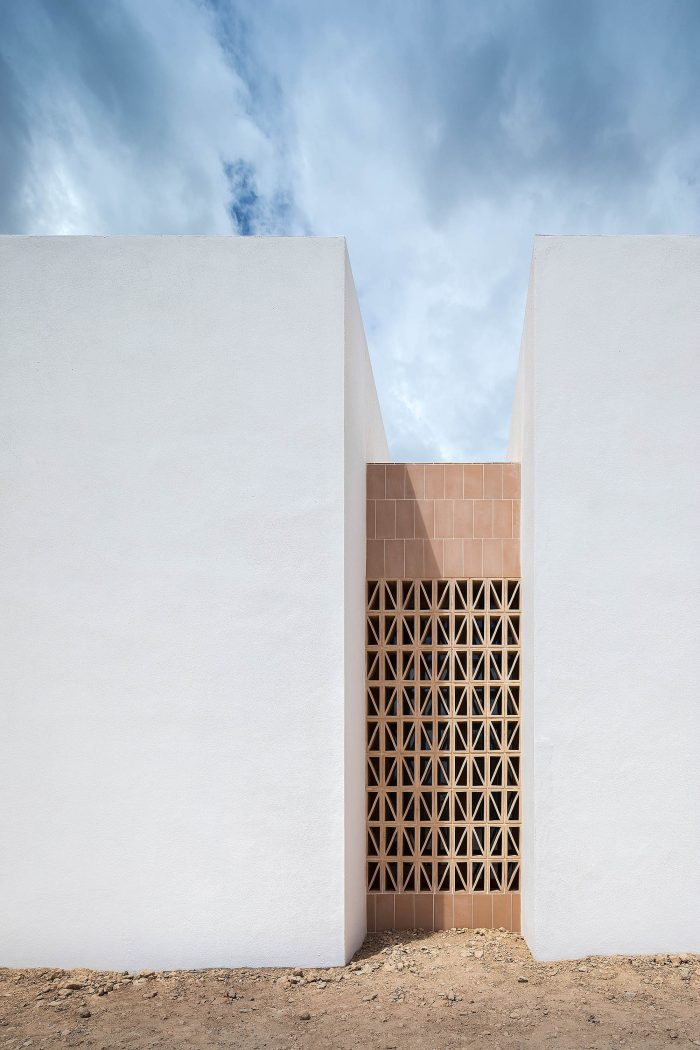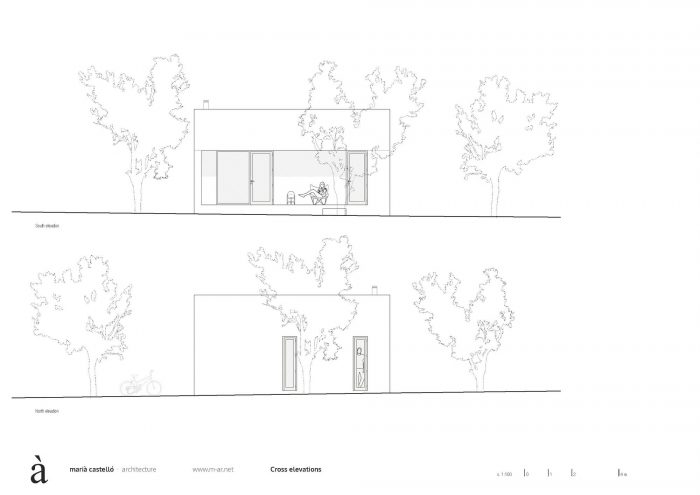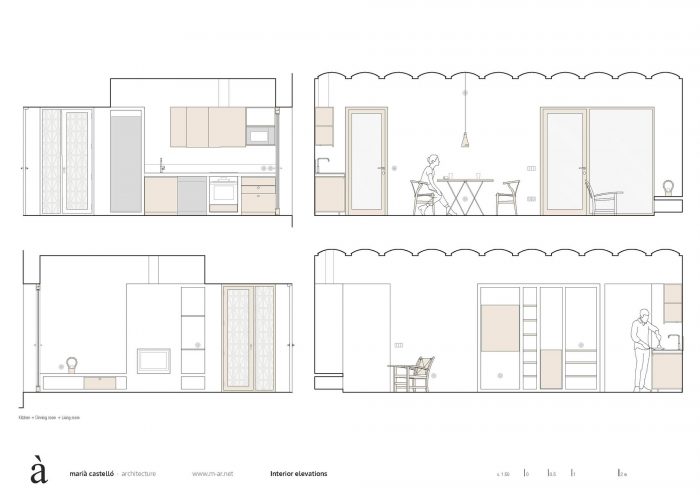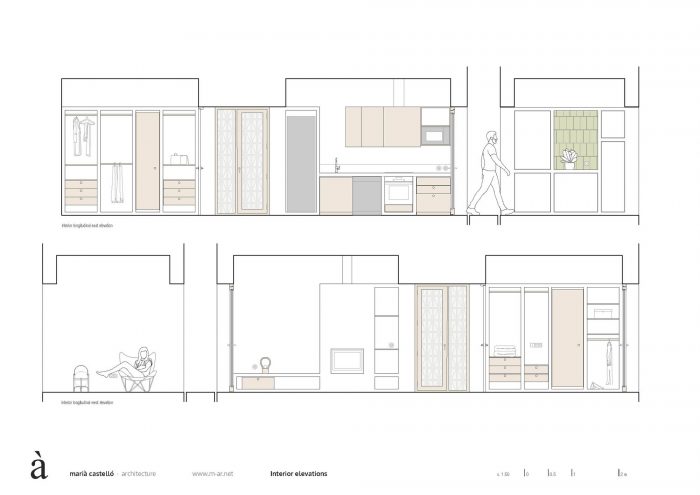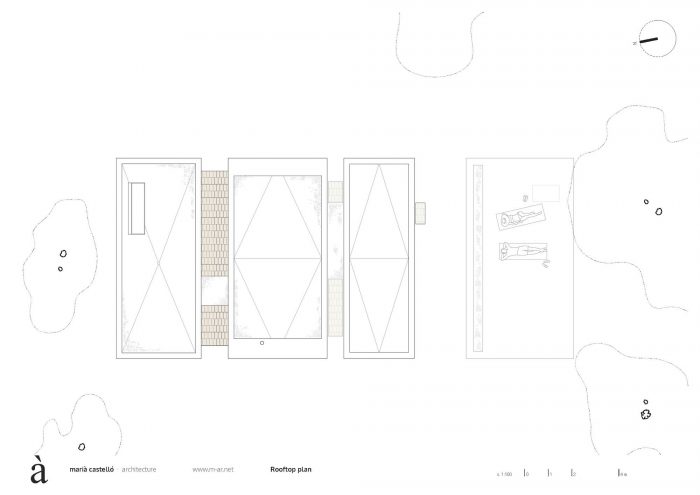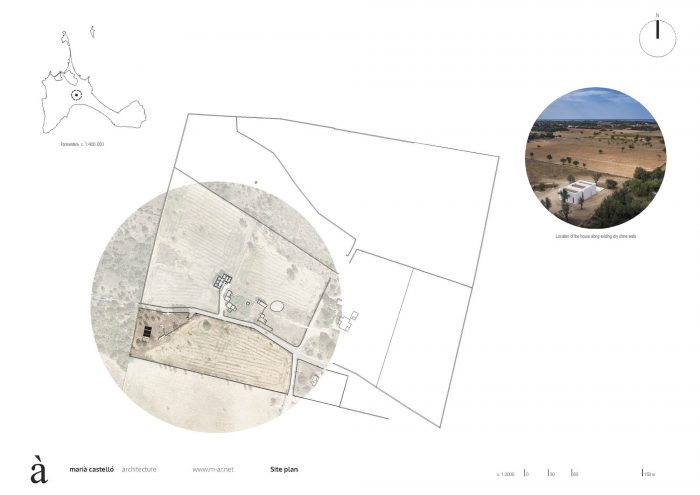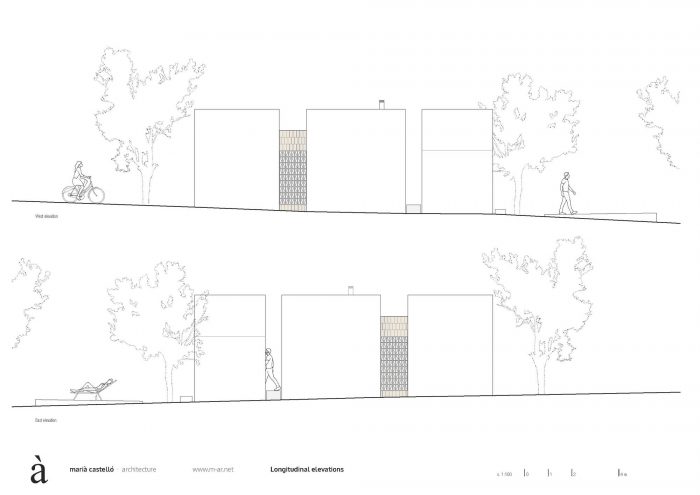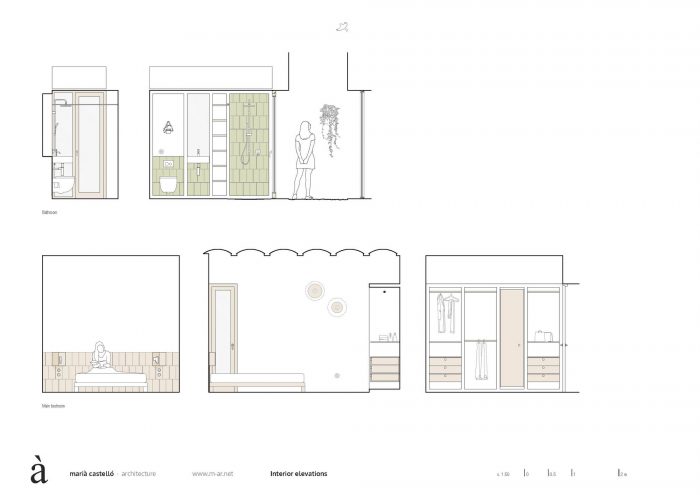“Es Pou de Can Marianet Barber “是福门特拉岛(西班牙)内部的一个历史地名。一个农村地块,其中几个预先存在的条件,这个小的第一居住地在境内的插入。其中,百年干石墙的网络突出,以及作物的组织。干预位于该地块的西部地区,平行于一公里多长的痕迹,面向南方,并由大量的植被保护免受夕阳的影响,从而释放出最肥沃的区域,使现有的农业活动具有连续性。
“Es Pou de Can Marianet Barber” is a historical place name in the interior of the island of Formentera (Spain). A rural plot where several pre-existent conditions the insertion of this small first residence in the territory. Among them, the network of centenarian dry stone walls stands out, as well as the organization of the crops. The intervention is located in the western area of the plot, parallel to a trace of more than a kilometer in length, oriented to the south and protected from the setting sun by a mass of vegetation, thus releasing the most fertile area to give continuity to the existing agricultural activity.
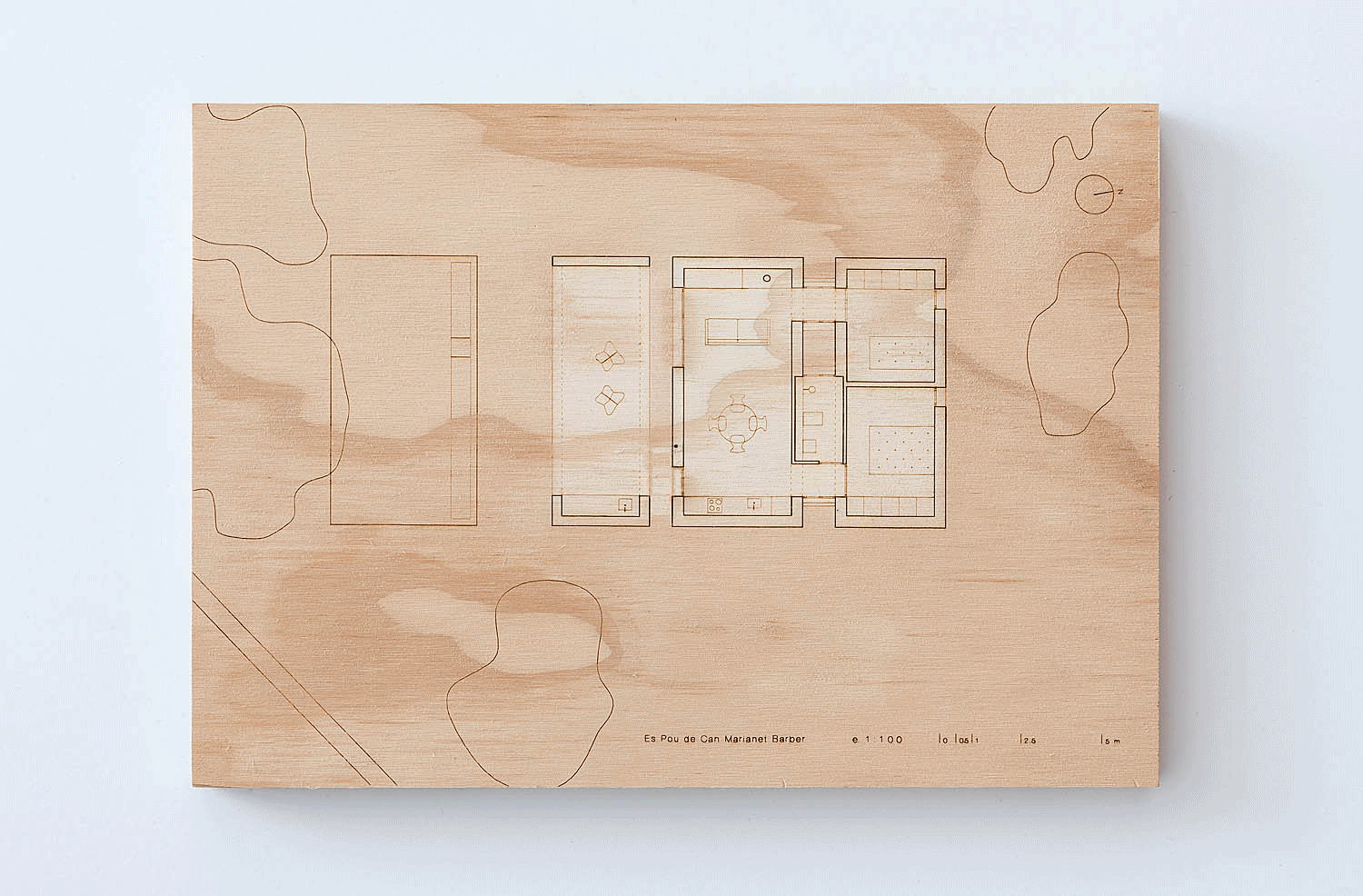
该方案分为三部分,在提供较小颗粒的同时,根据景观的规模来安排方案的顺序。从南到北,第一个体量容纳了一个提供太阳能保护的门廊,第二个体量包含了更多的公共程序,第三个体量是两个卧室。其中有横向的条带将各体量物理上分开,给它们提供通风和照明,并为它们提供服务和连接。在房子前面,有一个蓄水池,使其在供水方面自给自足,同时为一年中最寒冷的月份提供日光浴室。
The proposal is divided into three volumes, which order the program while providing it with a smaller grain and in accordance with the scale of the landscape. From south to north, the first volume houses a porch that offers solar protection, the second contains the more public program and the third two bedrooms. Among them are transverse strips that physically separate the volumes, giving them ventilation and lighting, as well as providing them with services and connections. In front of the house, there is a cistern that makes it self-sufficient in terms of water supply while offering a solarium for the coldest months of the year.
从屋内穿过门廊,可以看到小麦和燕麦田的平坦景象,这里的土地颜色柔和而温暖,杏树和无花果树的绿色也很柔和。外界的光线、色彩和材质进入室内,得益于陶瓷和木材这两种高贵的材料,以一种微妙而永恒的方式结合在一起。
From the inside and through the porch, deep perspectives are discovered towards the flat landscape of wheat and oat fields, where the soft and warm color of the earth and the muted greens of the almond and fig trees predominate. The light, color, and material from the outside enter the interior of the house thanks to ceramics and wood, two noble materials that are combined in a subtle and timeless way.
大地的温暖被转移到天花板和人行道上,通过马略卡风格的陶瓷拱顶和压制的赤陶砖来解决。同样,瓷砖也被用于解决其他各种元素,如立面覆层、屋顶饰面、主卧室的床头板或卵石砾石,就地处理所使用的陶瓷元素的损失。与植被颜色相关的新鲜感在潮湿的区域占主导地位,一些垂直的墙面上覆盖着陶质陶瓷砖,颜色为稀释的绿色,尺寸与其余部分相同。光线通过陶瓷格子向内过滤,反过来又产生了不断变化的光影。
The warmth of the earth is transferred to the ceiling and pavements, resolved by means of Mallorcan-style ceramic vaults and pressed terracotta tiles. Likewise, the tiles are used to solve various other elements, such as façade cladding, roof finish, the headboard of the master bedroom, or pebble gravel, processing in situ the losses of the ceramic elements used. The freshness associated with the color of the vegetation predominates in the humid areas, where some vertical walls are covered with vitrified ceramic tiles of a diluted green color and identical dimensions to the rest of the pieces. The light filters inwards through its passage through ceramic lattices, generating, in turn, a constant evolution of lights and shadows.
连贯性和材料的和谐导致了白色陶瓷电气机制的解决,在独特的地方,如主卧室的床头板,以及其他更常见的地方,如灯座和马桶的安装整合。一组灯和特殊的作品由我们工作室手工制作的模板也是专门为这个项目设计的,寻求它们在涂料背景下的色度和尺寸的整合。
The coherence and material harmony have led to solving with white vitrified porcelain electrical mechanisms the integration of the installations in unique places such as the headboard of the master bedroom, as well as other more common such as lamp holders and toilets. A set of lights and special pieces made by hand with formwork made in our studio have also been specifically designed for this project, seeking their chromatic and dimensional integration in the context of the coatings.
大部分的家具都是定制设计的,与建筑本身融为一体,而诸如1934年的Torres Clavé扶手椅或来自福门特拉岛的传统椅子则是对地中海工匠传统的致敬。其他更现代的作品,如D12系列的桌子和咖啡桌,由Marià Castelló和Lorena Ruzafa为《Diabla Outdoor》编辑设计,为整套产品提供了轻微的材料和色泽对比。
Most of the furniture has been custom-designed integrated into the architecture itself, while icons such as the Torres Clavé armchair, from 1934, or the traditional chairs from Formentera pay homage to the Mediterranean artisan tradition. Other more contemporary pieces such as the table and coffee tables from the D12 collection designed by Marià Castelló and Lorena Ruzafa for the editor Diabla Outdoor, provide a slight material and chromatic counterpoint to the set.
这个项目中一些解决方案的起源与同时开发的艺术项目 “建筑碎片 “密切相关:https://m-ar.net/fragments-darquitectura/。
The origin of some of the solutions in this project are closely linked to the artistic project “Architecture Fragment”, developed in parallel: https://m-ar.net/fragments-darquitectura/
建筑师:Marià Castelló Martínez
面积:94平方米
年份:2021年
制造商:Firestone Building Products, Cerámica Mano Alzada, Cerámica la Andaluza, Cerámicas Ferrés, Corian, Diabla Outdoor, Marià Castelló, Architecture
施工管理:Lorena Ruzafa, Marià Castelló
技术架构师:José Luís Velilla Lon
结构:Ferran Juan Nicolau
设施:Javier Colomar Riera
设计师团队:Lorena Ruzafa, Marga Ferrer
建造者:Toni 13
国家:西班牙
Architects: Marià Castelló Martínez
Area: 94 m²
Year: 2021
Manufacturers: Firestone Building Products, Cerámica Mano Alzada, Cerámica la Andaluza, Cerámicas Ferrés, Corian, Diabla Outdoor, Marià Castelló, Architecture
Construction Management:Lorena Ruzafa, Marià Castelló
Technical Architect:José Luís Velilla Lon
Structure:Ferran Juan Nicolau
Facilities:Javier Colomar Riera
Designer Team:Lorena Ruzafa, Marga Ferrer
Builder:Toni 13
Country:Spain

